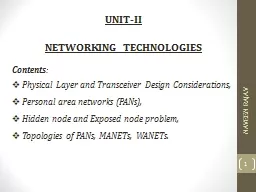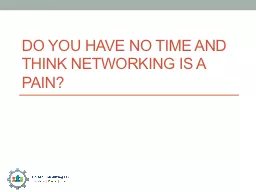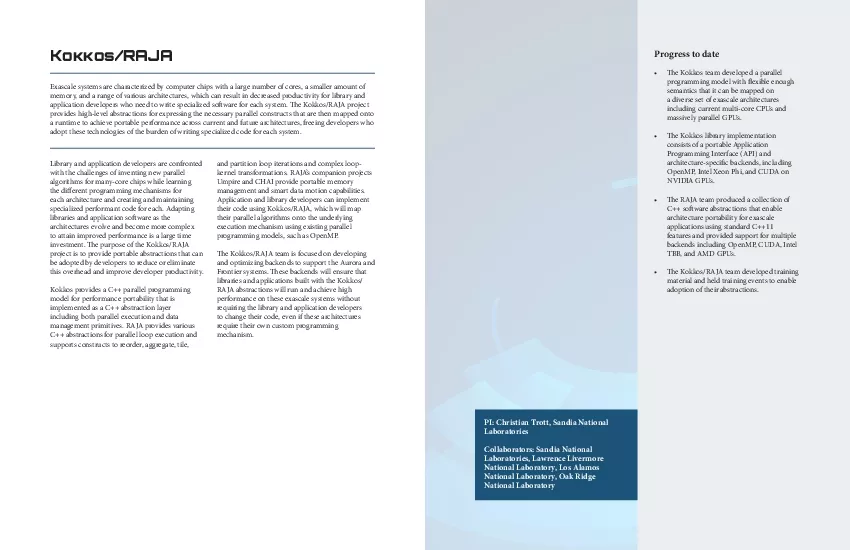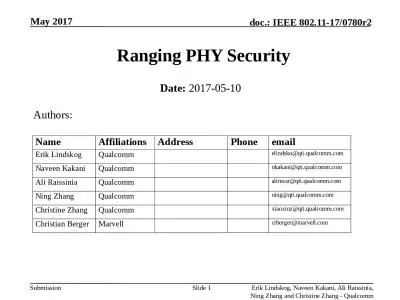PPT-NAVEEN RAJA.V 1 UNIT-II NETWORKING TECHNOLOGIES
Author : patchick | Published Date : 2020-06-19
Contents Physical Layer and Transceiver Design Considerations Personal area networks PANs Hidden node and Exposed node problem Topologies of PANs MANETs
Presentation Embed Code
Download Presentation
Download Presentation The PPT/PDF document "NAVEEN RAJA.V 1 UNIT-II NETWORKING TECHN..." is the property of its rightful owner. Permission is granted to download and print the materials on this website for personal, non-commercial use only, and to display it on your personal computer provided you do not modify the materials and that you retain all copyright notices contained in the materials. By downloading content from our website, you accept the terms of this agreement.
NAVEEN RAJA.V 1 UNIT-II NETWORKING TECHNOLOGIES: Transcript
Download Rules Of Document
"NAVEEN RAJA.V 1 UNIT-II NETWORKING TECHNOLOGIES"The content belongs to its owner. You may download and print it for personal use, without modification, and keep all copyright notices. By downloading, you agree to these terms.
Related Documents














